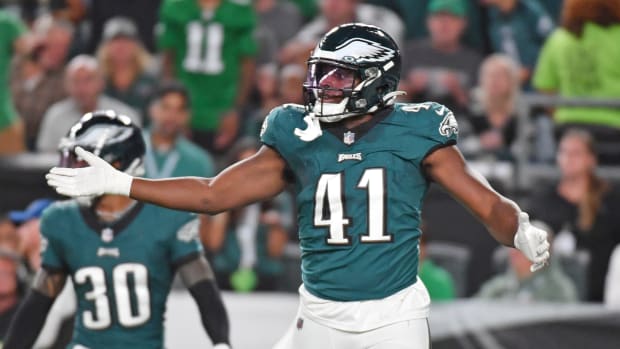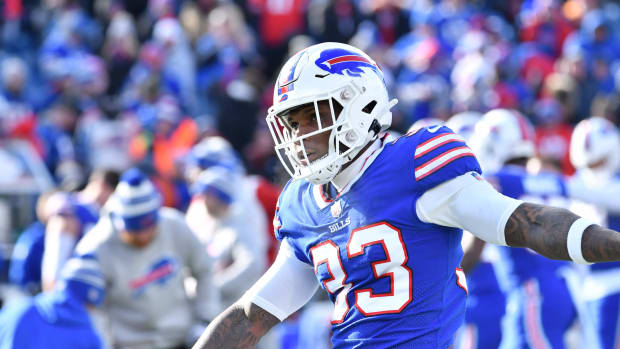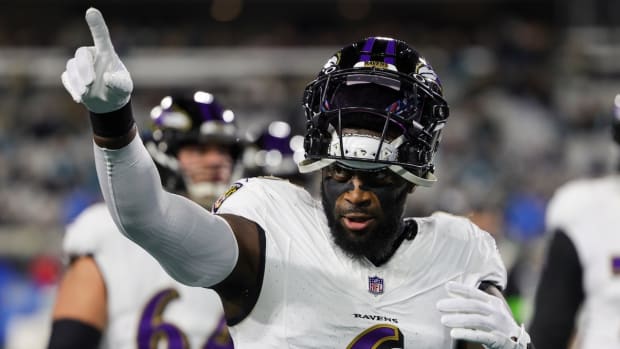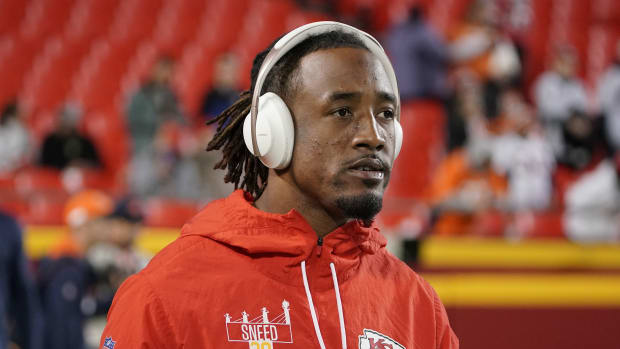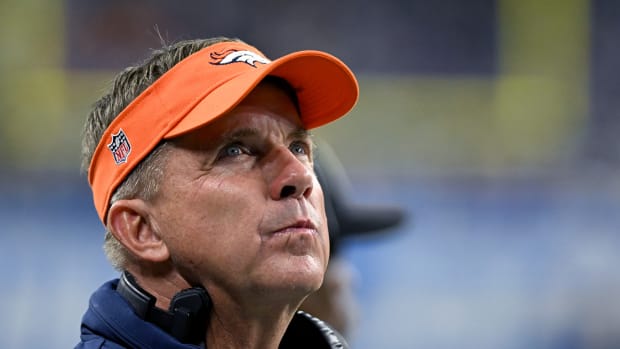
Final Impressions of XLIX
Al Tielemans/Sports Illustrated/The MMQB
Patriots’ offense vs. Seahawks’ defense
This game was the hallmark performance of Tom Brady’s illustrious career. He was sensational throughout, particularly on the final two drives. Aside from his two interceptions—the first was an utterly baffling decision, throwing without definition into tight red zone quarters coverage; the second was an ill-advised challenge of Bobby Wagner’s outstanding short area zone coverage—Brady was sensational. He moved well in the pocket, read the field acutely and threw with pinpoint accuracy.
The Seahawks played more man coverage than usual, (on 19 of Brady’s 50 pass attempts) and the Patriots, who employ tremendous man-beater route concepts, made them pay. The best examples: Rob Gronkowski’s 21-yard crosser against Kam Chancellor and Gronkowski’s 22-yard touchdown against K.J. Wright. On that TD, the Seahawks had been playing man-to-man with both safeties in help coverage against New England’s two-minute offense. Shane Vereen had gouged Seattle a handful of times, and so Earl Thomas switched over to take Vereen, leaving Chancellor as the single-high defender and making Wagner (who’d been on Vereen most of the game) as a shallow lurker. This left Wright on an island against Gronkowski, who was split out as the lone receiver on the backside of trips.
Vereen’s short-area receiving was critical throughout this contest. Overall, the Patriots did an excellent job manufacturing a short-area passing game that was designed to exploit man coverage or Seattle’s foundational man-zone Cover 3 hybrid. A great illustration was Brandon LaFell’s 11-yd touchdown. On that play, a fake handoff behind left guard Dan Connolly’s pull-block to the right froze Wagner for a split second. That, plus the slot receiver’s route to the flat, created the throwing window.
These sorts of quick throws negated a Seattle pass rush that featured a lot of stunt concepts. Aside from Michael Bennett, who constantly showed his lateral explosiveness and quick first step, no defensive lineman generated consistent pressure.
Seahawks’ offense vs. Patriots’ defense
The film shed no new light on Malcolm Butler’s game-winning interception. Russell Wilson’s ball placement was not ideal, but the key was Butler’s outstanding play recognition. Consider it a case of the football gods leveling things out after Jermaine Kearse’s lucky 33-yard catch.
The Patriots were the better unit throughout the game. Their man-to-man coverage stifled a passing attack that continued to feature a lot of isolation routes out of spread sets. Perhaps Seattle’s objective was to create more horizontal field for Wilson to use, but the Patriots did a good job taking that away with various spy concepts. Dont’a Hightower served in this role, as did Devin McCourty, who was the lurk defender in man-free coverage on third-and-long. Playing McCourty in that role (Duron Harmon filled McCourty’s centerfield position) gave the Patriots more speed with which to combat Wilson. Collective defensive speed was a big focus of New England’s approach; Patrick Chung also played a heavy load as part of a three-safety, three-corner dime package.
The Patriots came in willing to play the run with a six-man box. They prevented double-teams by putting both defensive tackles in the B gaps (aka the “three technique” spot). Their defensive line, plus inside linebackers Hightower and Jamie Collins (who rarely spied Wilson) showed a tremendous blend of patience and quickness. It helped that they knew Marshawn Lynch would be keeping the ball, because on read-options the Patriots consistently kept a defensive end out wide to force a handoff.
A final note
Something else to consider about Darrell Bevell’s play-call from the 1-yard-line: Seattle had only one timeout and 26 seconds left, so they had to throw on one of their remaining three downs. It’s impossible to run three times in that situation. Bevell chose to pass on the first of his remaining three downs, knowing that an incompletion would stop the clock. And Bevell didn’t just flip to a random page in his playbook. The Seahawks had a very specific pass design in place for a goal-line situation. Unfortunately—and this is what should be remembered—the Patriots were ready for it.
Follow The MMQB on Facebook, Twitter and Instagram.
[widget widget_name="SI Newsletter Widget”]


































